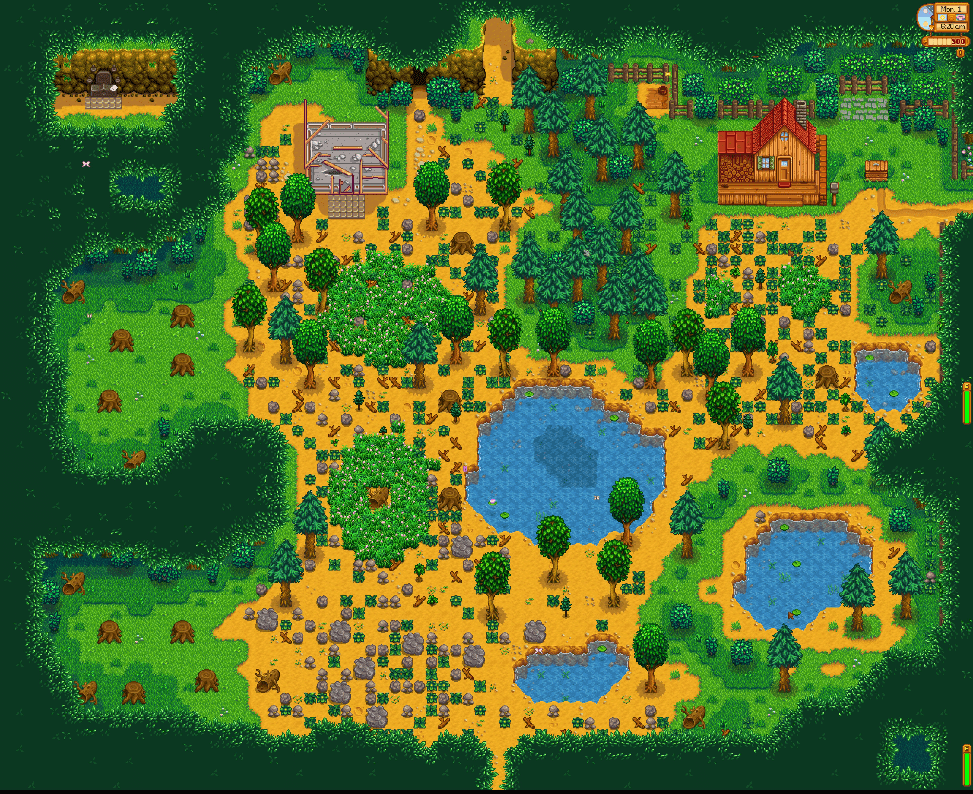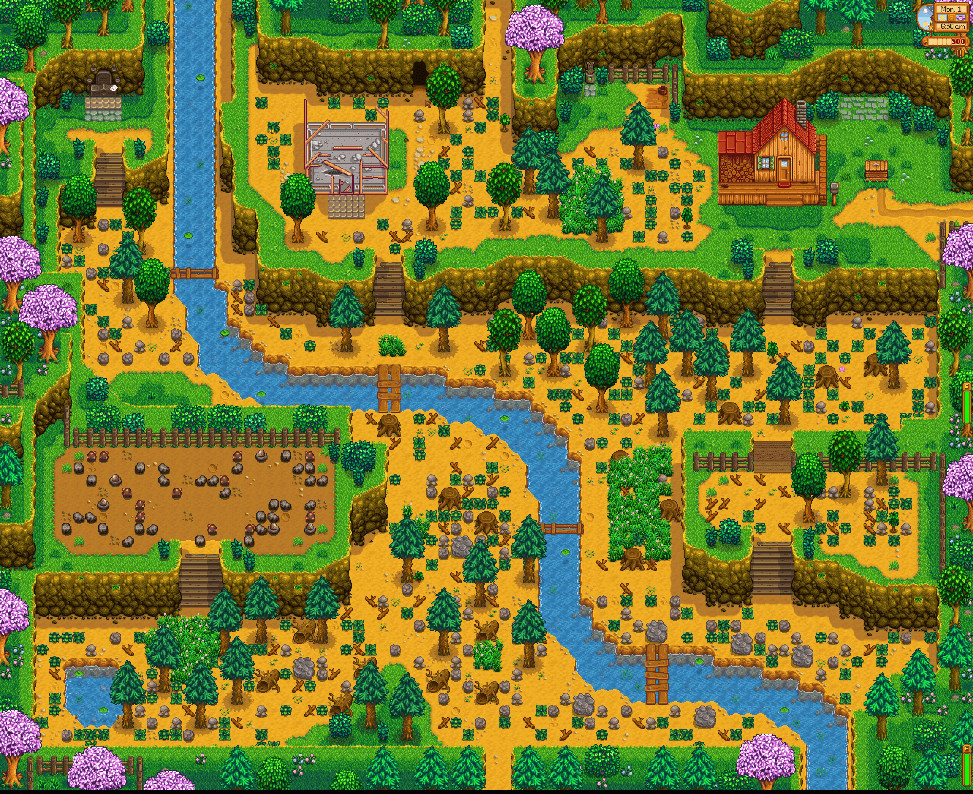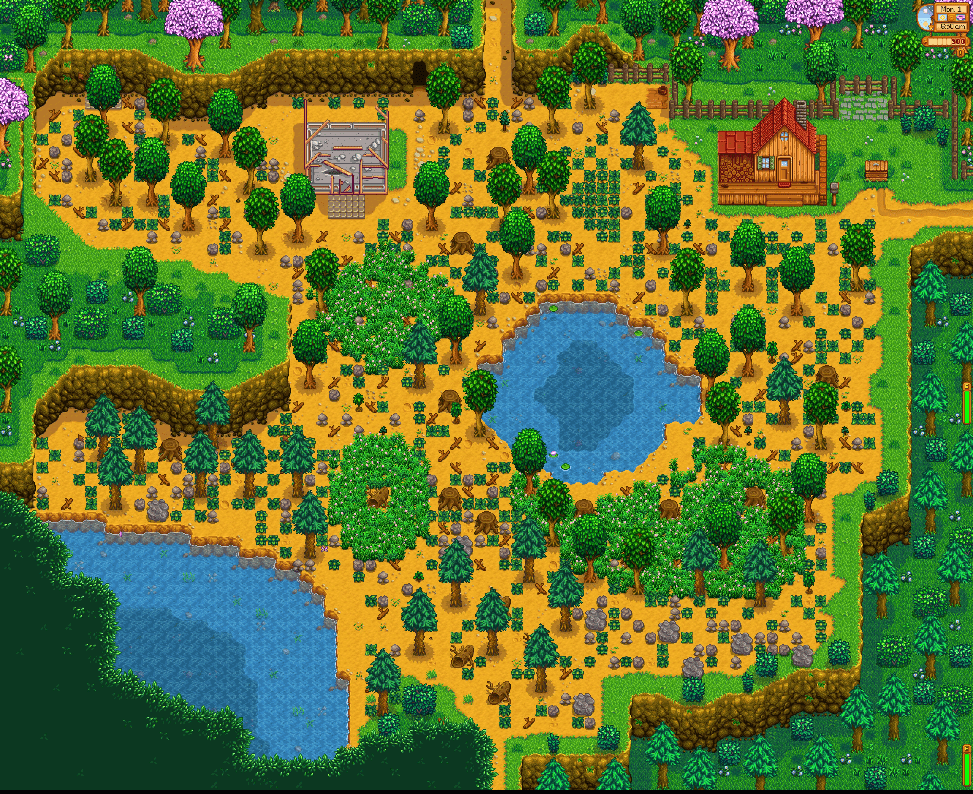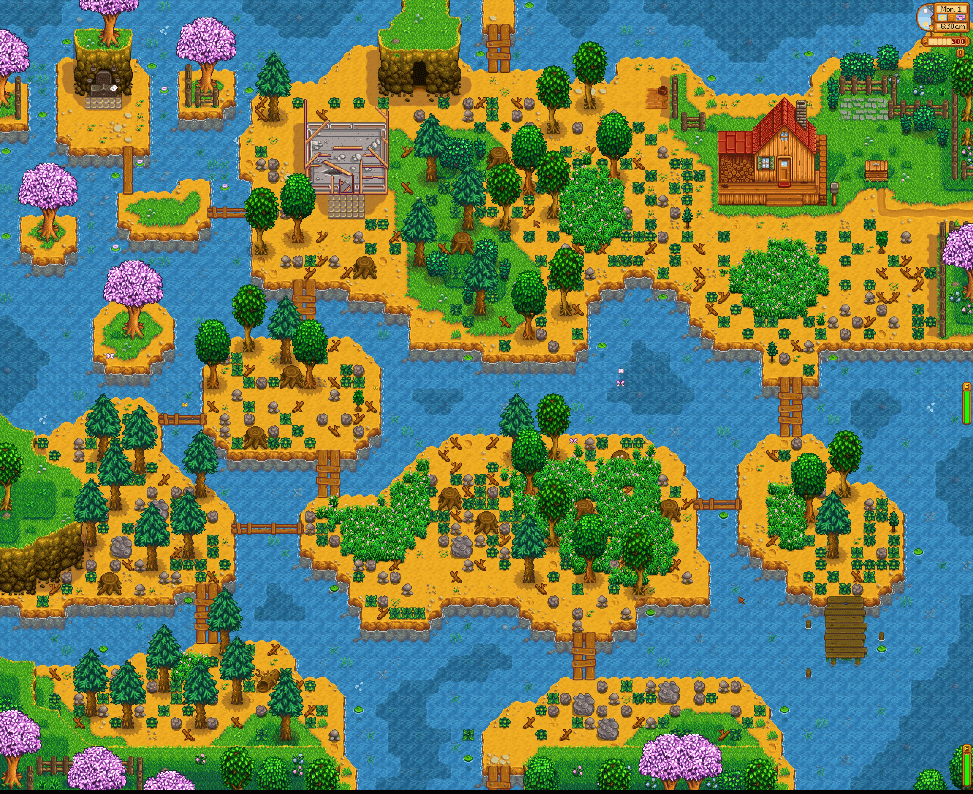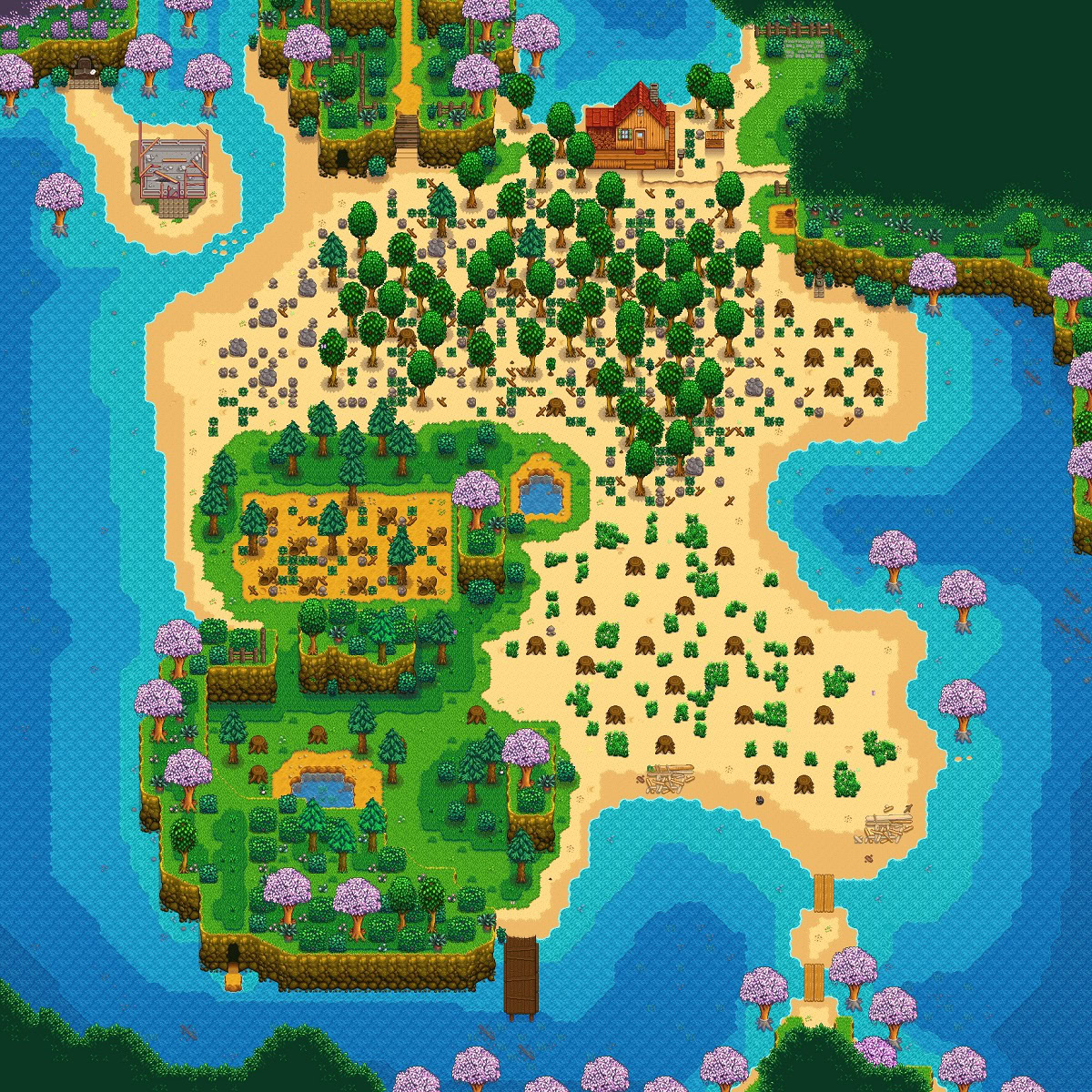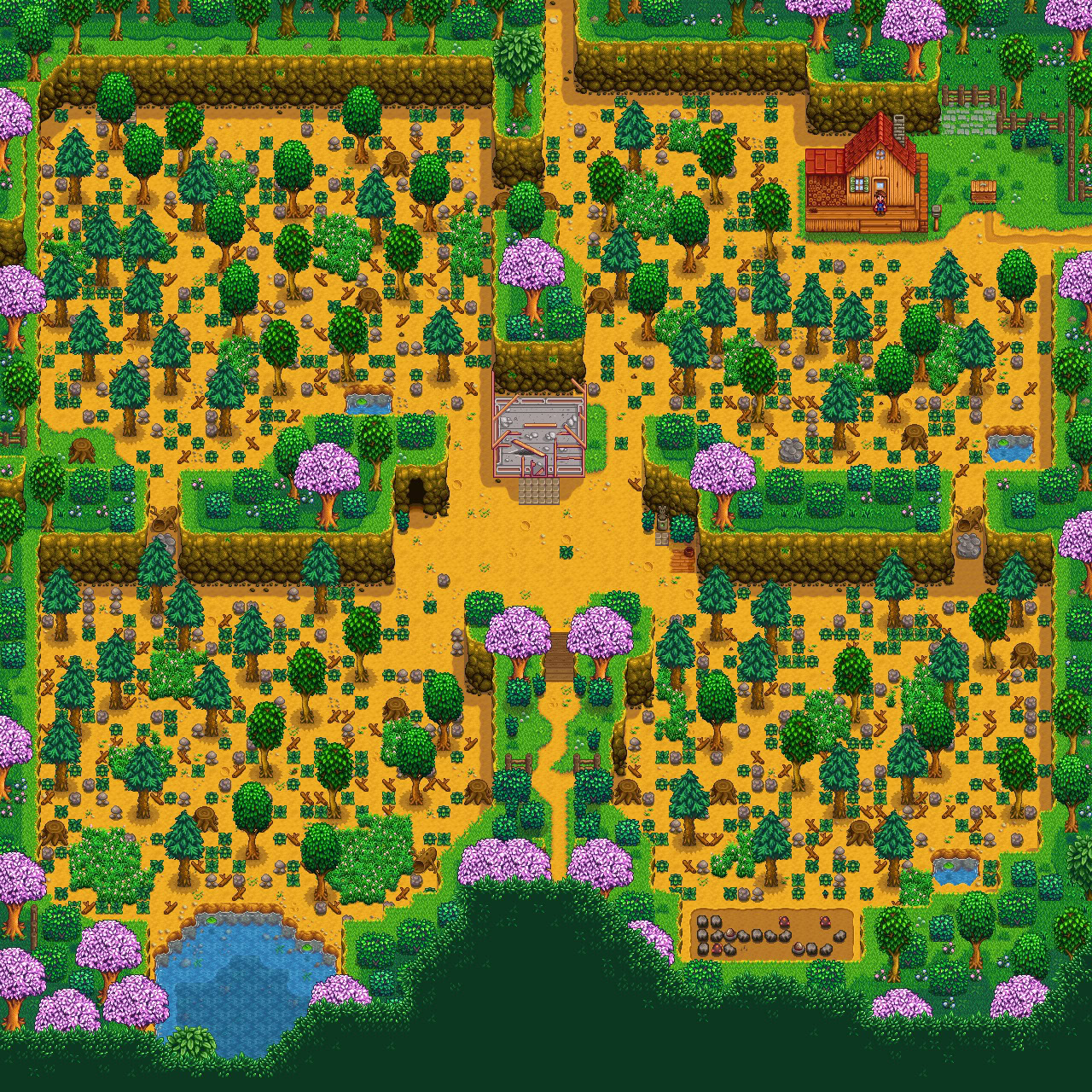Affiliate links on Android Authority may earn us a commission. Learn more.
The best Stardew Valley farm layouts: Sow the seeds of victory
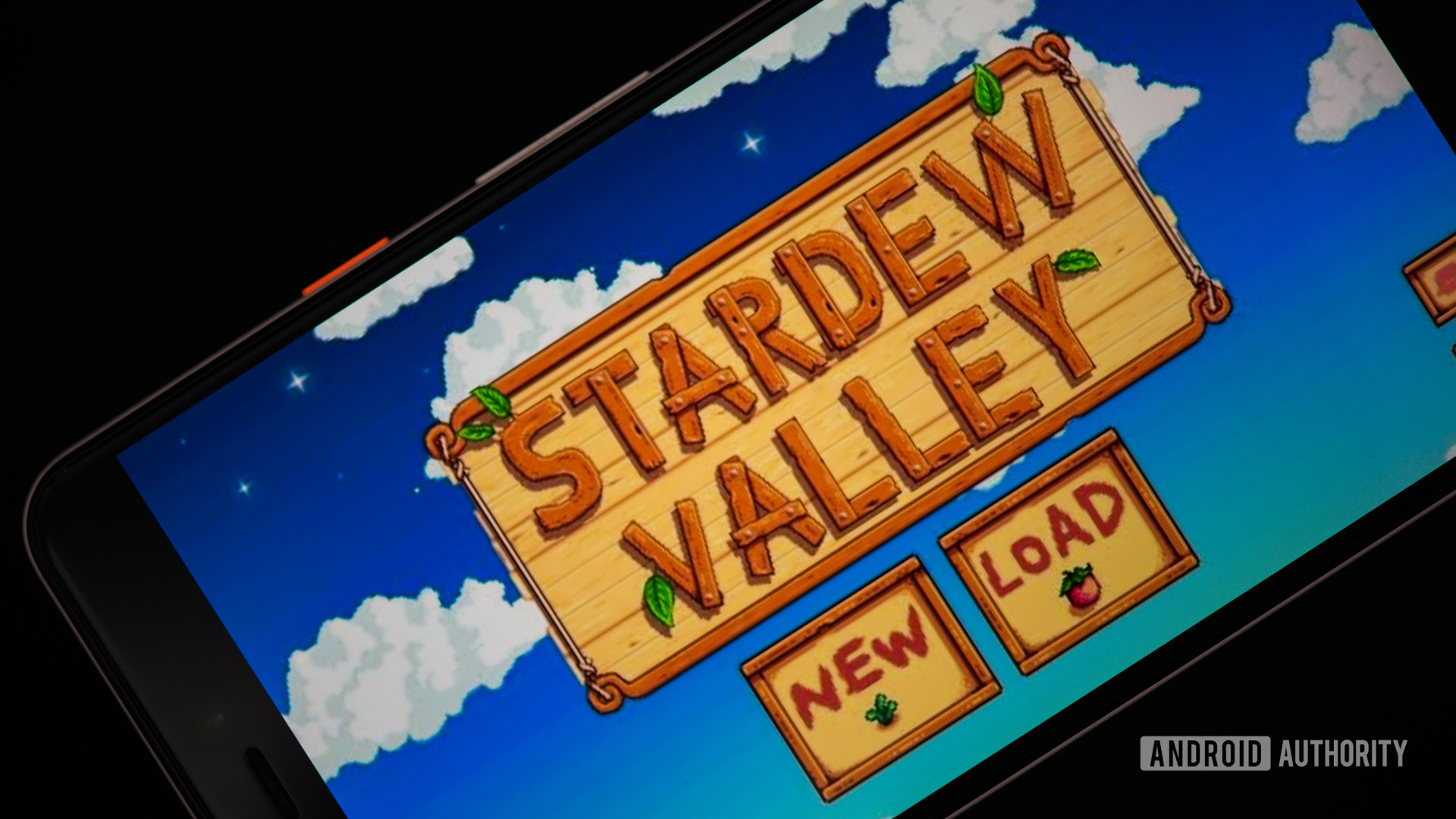
Stardew Valley is one of the most wholesome games on Google Play, but don’t be fooled by its cute surface! Beneath it, there are a lot of mechanics and strategies that can take hundreds of hours to master.
But before you start your journey, there’s one important decision you make: choosing your farm layout. Each Stardew Valley farm layout has its unique challenges and benefits, which we’ll explore in our guide. Let’s get into it!
The best Stardew Valley farm layouts
Standard farm layout
- 3427 tillable tiles, 235 non-tillable but build-able tiles
Standard might sound boring, but this Stardew Valley farm layout is the best for any aspiring agricultural mogul. It has the highest number of usable tiles, i.e. space you can plant and build on. This allows you to quickly build up resources in the early game, but also to customize the land to your liking in the late game. You can build multiple branching paths and fill the farm with coops, slime hutches, or anything else to your heart’s content.
Read also: Stardew Valley friendship and marriage guide
The standard farm layout is also great for Stardew Valley beginners because it contains many valuable resources — plenty of trees, stumps, and stones. Clearing them out requires some back-breaking labor (or should we say finger-breaking), but you will need them later on for upgrading your house and building other structures. The only downside of the Standard farm is that both of the ponds on your land are bereft of fish, so you’ll need to take do your angling somewhere else. We think it’s a small price to pay for all the other rewards you will reap.
Forest farm layout
- 1413 tillable tiles, 77 non-tillable but build-able tiles
If you want to feel at one with nature, the Forest farm layout might be just what you are looking for. This Stardew Valley farm map might have the least tiles, but it makes up for it with mystery, plentiful ponds, and rare resources.
What does this mean exactly? Well, it resembles the Secret Woods area to the South of your farm. It features two areas with large stumps, which can be cut down for renewable hardwood and much more.
Any lazy farmer who doesn’t want to disturb nature will also be happy to know that you can find plenty of forage items on this map. This includes berry bushes that can be harvested in spring and autumn, map-exclusive weeds that drop mixed seeds, and any juicy seasonal fruits and vegetables.
The forest farm’s ponds are also more useful. You can find many of the same fish that are available in the Cindersnap forest lakes, but the chance for trash is still higher on the farm. The Forest farm will be hard to optimize for beginners, however, so we recommend avoiding it on your first playthrough.
Hill-top farm layout
- 1648 tillable tiles, 930 non-tillable but build-able tiles
Living in a house on the top of the hill might offer the best views, but this Stardew Valley farm layout is a bit trickier than the previous two. It divides your farm into six sections accessible via bridges or stairs.
While that may look intriguing, it means that the Hill-top farm layout has fewer tiles you can use for building and planting compared to the standard map. It also makes optimal placement of buildings and farm plots a lot more challenging.
But while you might have to trot around on your horse to save time, you won’t have to travel far to mine some ore. This farm layout contains a hilltop area that is home to stones and ore nodes, which can be mined for early resources without having to slay Slimes. However, we still think this might be a steep hill (top) to climb for beginners. If you do have some Stardew Valley experience, however, the Hill-top farm layout may provide a nice change of scenery and a decent challenge.
Wilderness farm layout
- 2131 tillable tiles, 444 non-tillable but build-able tiles
If monster combat and harsh terrain are to your liking, the Wilderness farm layout is ready to test your resolve. This farm layout offers the second most tillable and buildable tiles, but at a dangerous price.
In the darkness, Wilderness Golems come to haunt your farm. These creatures are unique to the map and scale in difficulty according to your level, so don’t forget your sword if you want to do some late-night farming!
You will also find a sprawling lake in the middle of the Wilderness layout too. While no Lovecraftian horrors will climb out of it to drag you into the depths, its placement is rather inconvenient. It takes up valuable space close to your front door, so your farming plots will have to be more spread out.
Nevertheless, the Wilderness farm layout is not prohibitively hard. It’s still a good pick even for relative beginners thanks to its plentiful resources.
Riverland farm layout
- 1587 tillable tiles, 516 non-tillable but build-able tiles
The Riverland farm is almost certainly the prettiest of the lot, but it’s without a doubt the most difficult farm layout to master. Here, fresh produce will need to be replaced by fresh fish.
The map is almost entirely covered with water, which means crop tiles are few and far between. This presents a significant challenge because fishing, especially with early game equipment, is one of the hardest skills to master in Stardew Valley.
Read also: The ultimate Stardew Valley fishing guide
Even if you catch on fast, fish are simply not as lucrative as crops. Fishing will also drain your energy pretty quickly. If you persevere, however, you can eventually create a water farm by littering crab pots everywhere.
We don’t recommend the Riverland farm layout for Stardew Valley beginners, but we do think it’s an excellent choice for experienced players who want to try a different playstyle.
Beach farm
- 2700 tillable tiles, 1928 non-tillable but build-able tiles
The newest Stardew Valley farm layout will force you to entirely rethink the concept of a farm. Beach farm is, as the name implies, comprised almost entirely of sandy tiles. These are unique in that they are tillable, but cannot have sprinklers. There’s just a small area of dirt where sprinklers are viable, so you’ll have to come up with new ways to water your crops or change your strategy completely.
There are a few benefits, however, as supply crates and other goodies will wash up on your shores. Fishing is also great here since you can catch more valuable ocean fish. Trees can also grow on sand, so you’ll still have a decent supply of wood early in the game. That said, this farm layout is best left to only the most experienced players who are looking for new challenges in Stardew Valley.
Four Corners farm
- 2952 tillable tiles
We’re including the Four Corners farm here, but in reality, it’s intended for multiplayer use. You can play it in single player too, but the other maps offer more interesting gameplay.
This Stardew Valley farm layout is slightly smaller than a standard map, but still offers plenty of space for farming. Each corner also has its own small pond to draw water from. There’s also a lot of variety here, with each corner emulating a different farm type: Forest, Standard, Hill-top, and one more with a pond.
Obviously, this is the best map for multiplayer, but for single player we’d recommend sticking to one of the others for a more genuine Stardew Valley experience.
More Stardew Valley farm layout tips and tricks
Whether you want to be efficient and maximize your farm’s output or you want to create a cozy farm paradise, there are some tricks that will make your farming adventure easier. Here is what we recommend:
- Put your farm plots as close to your entrance as possible. This makes it easier to quickly harvest plants and sell them via the wooden box next to your house.
- Animals need to be tended to every day if you want quality products. Make sure your coops and barns are close together and have a shared grass area for easy access.
- Make use of barns and coops for storage: put your mayonnaise machines and cheese presses inside to create your artisan goods on the spot.
- Plant trees in the greenhouse to save space. They will produce fruit year-round!
- Dedicate a small outside area to storage, and color-code your chests for easy access.
Finally, we recommend checking out this Stardew Valley planner — it allows you to test how every layout works and plan your dream farm.

